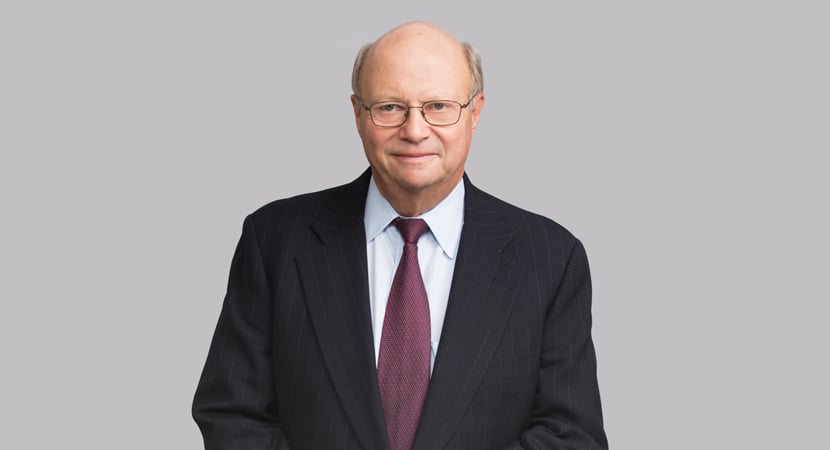In putative class action arising from unauthorized use of copyrighted images to train generative AI platforms, district court allows plaintiffs’ claim of direct copyright infringement to proceed but dismisses plaintiffs’ other claims, including for vicarious infringement, with leave to amend.
Sarah Anderson, Kelly McKernan and Karla Ortiz are all artists. Stability AI Ltd. and Stability AI, Inc., are the creators of Stable Diffusion, a software program that, according to plaintiffs, has downloaded or otherwise acquired copies of billions of copyrighted images—without the permission of the creators—to be used as “training images” to act as a “software library” for a variety of visual generative artificial intelligence (AI) platforms, including DreamStudio (which is owned by Stability), DreamUp (which is owned by DeviantArt, Inc.) and Midjourney (which is owned by the eponymous company, Midjourney, Inc.). Plaintiffs, on behalf of a putative class consisting of other visual artists, brought suit against Stability, DeviantArt, Inc., and Midjourney, Inc., alleging that Stable Diffusion had been “trained” on plaintiffs’ copyrighted works to be able to produce output images in their particular artistic styles and that this conduct constituted direct copyright infringement, vicarious copyright infringement, violation of the Digital Millennium Copyright Act (DMCA), violation of the statutory and common law right of publicity, unfair competition, and breach of contract. Each of the defendants moved to dismiss.
The court first addressed plaintiffs’ copyright claims. As a preliminary matter, the court limited the scope of the claims to a set of 16 collections of works belonging to Anderson, due to plaintiffs’ failure to register with the Copyright Office any of the other works at issue. However, the court declined to dismiss the copyright allegations due to Anderson’s failure to specify which works of hers were used as training images for Stable Diffusion. Instead, the court found that, at the pleadings stage, it was sufficient for Anderson to point to the results of a search for her name on haveibeentrained.com, which shows users whether their works have been included in AI training datasets. Based on the results of that search, the court found it plausible that “all of Anderson’s works that were registered as collections and were online were scraped into the training datasets.”
Turning to the substance of plaintiffs’ copyright allegations, the court denied Stability’s motion to dismiss plaintiffs’ claims for direct infringement. The court found that plaintiffs’ allegations that Stability acquired copies of plaintiffs’ copyrighted works, used those works to train Stable Diffusion, and then stored or incorporated the training images derived from their works into Stable Diffusion as compressed copies were sufficient to plead direct infringement.
Plaintiffs’ claims for direct infringement against DeviantArt were not as strong, however. In general, plaintiffs argued that DeviantArt engaged in direct infringement (1) “by distributing Stable Diffusion, which contains compressed copies of the training images, as part of … DreamUp;” (2) “by creating and distributing their DreamUp, which is itself an infringing derivative work;” and (3) by “generating and distributing output images which are infringing derivative works.” As to the first and second theories, the court found that plaintiffs’ complaint did not adequately explain how Stable Diffusion actually stores and makes use of training images. Specifically, the complaint was unclear as to whether Stable Diffusion created copies of copyrighted works or whether it used “statistical and mathematical methods” to capture concepts from the training images. Given the lack of clarity, the court could not find that either of the first two theories of infringement plausibly stated a claim for direct infringement by copying. The court instead directed plaintiffs to amend their complaint so as to “provid[e] clarity regarding their definition of and theory with respect to the inclusion of compressed copies of Training Images in Stable Diffusion,” as well as to “provide more facts that plausibly show how DeviantArt is liable for direct copyright infringement when … DeviantArt simply provides its customers access to Stable Diffusion as a library.” As for the first theory of infringement—that DreamUp produces output images that are all infringing derivative works—the court found it highly unlikely that such a theory could work absent allegations that the output images are substantially similar to the training images. Nevertheless, the court granted plaintiffs the opportunity to amend so that they could clarify to what extent the output images look like the training images.
As for plaintiffs’ claims for direct infringement against Midjourney, the court similarly found plaintiffs’ allegations to be insufficiently detailed. Specifically, plaintiffs did not offer any facts showing what training, if any, Midjourney undertook for its AI platform, and in the absence of these facts, the court could not determine whether Midjourney had improperly used plaintiffs’ copyrighted images. Plaintiffs’ other theories of liability against Midjourney were also deficient for the same reasons as the court identified in discussing DeviantArt. Accordingly, the court dismissed the direct infringement claim against Midjourney with leave to amend.
The court also briefly addressed plaintiffs’ claims for vicarious infringement. Because a claim for vicarious infringement requires an underlying act of direct infringement, the court dismissed with leave to amend the claims for vicarious infringement against DeviantArt and Midjourney. As for Stability, the court also dismissed the claim with leave to amend because the complaint did not offer plausible facts about the “compressed copies” of training images in Stable Diffusion and how those copies might be present in DreamStudio. However, the court noted that even if plaintiffs were able to offer plausible facts, there would still be potential defects in the vicarious infringement claim due to plaintiffs’ failure to identify how defendants’ AI platforms had been used in an infringing manner by third parties.
Next, the court turned to plaintiffs’ DMCA claims, which centered on whether any of the defendants had removed copyright management information (CMI) from any of plaintiffs’ works with the knowledge that doing so would induce, enable, facilitate or conceal copyright infringement. For reference, CMI is textual information that identifies the title, author and copyright owner of a work. Defendants argued—and the court agreed—that the complaint was devoid of any allegations as to what CMI, if any, had allegedly been altered or removed by defendants. Accordingly, the court ordered plaintiffs, on amendment, to “identify the particular types of their CMI from their works that they believe were removed or altered,” and “clarify and … allege plausible facts regarding which defendants … did the stripping or altering in violation of the DMCA and when that occurred.”
The court found similar deficiencies in plaintiffs’ right of publicity claims. Plaintiffs argued that their right of publicity claims were premised on defendants’ use of their names to advertise and promote their respective AI platforms. However, the court found that the complaint did not offer any facts showing that any of the defendants had used any of plaintiffs’ names to advertise, sell or solicit purchase of any of the AI platforms, and similarly did not offer any facts showing that using any of the plaintiffs’ names as a text prompt would produce any AI-generated images that were similar enough to the plaintiffs’ respective artistic styles that a person could believe that it was plaintiffs who created the image. The court dismissed these claims as well, with leave to amend.
Turning to plaintiffs’ unfair competition claims, the court found a variety of reasons that counseled in favor of dismissal. First, any unfair competition claim that was premised on purported copyright violations was preempted by the Copyright Act. Second, insofar as the claim was premised on the Lanham Act, it required dismissal because the complaint did not allege any plausible facts “in support of how a user could be deceived that one of the named plaintiffs was the origin of an Output Image, sponsored the Output Image, or approved of the Output Images such that their goodwill was injured or they suffered other specific injury.” Third, the claim was deficient because plaintiffs failed to allege “how each defendant’s AI product uses plaintiff’s names or associates work with plaintiffs,” and failed to meet the heightened pleading standards for fraud claims. Finally, the common law portion of the unfair competition claim was dismissed due to a lack of clarity as to what, exactly, defendants were accused of misappropriating.
Plaintiffs’ final substantive claim was a breach of contract claim that they brought solely against DeviantArt. Plaintiffs argued that DeviantArt breached its Terms of Service and Privacy Statement by (1) “[s]haring Plaintiffs’ and the Class’s personal data with unauthorized third parties in violation of the DeviantArt Privacy Statement,” (2) “[s]elling and distributing Plaintiffs’ and the Class’s personal data in contravention of … DeviantArt’s policies,” (3) “[u]se of Plaintiffs’ and the Class’s personal data after the DeviantArt Privacy Statement explicitly claims it will be deleted,” and (4) “[u]se and distribution of Plaintiffs’ and the Class’s personal data outside the limitations set forth in the DeviantArt Privacy Statement.” However, plaintiffs did not identify any specific provisions of the Terms of Service or Privacy Statement that DeviantArt breached and did not identify how the actions of third parties, such as Stability, would result in DeviantArt breaching its agreement(s) with plaintiffs. The court, therefore, dismissed the breach of contract claim, stating “[i]f plaintiffs attempt to amend this claim, they must identify the exact provisions in the T[erms of Service] they contend Deviant Art breached and facts in support of breach,” and, “[t]o the extent plaintiffs rely on provisions that appear to protect or benefit DeviantArt but not the users, or contracts DeviantArt entered into with other entities, plaintiffs must identify those precise provisions …, but also facts supporting plaintiffs’ theory that they are intended third-party beneficiaries of those provisions.”
As a final matter, defendants raised several defenses and additional motions. DeviantArt sought to dismiss and strike plaintiffs’ right of publicity claims based on both the First Amendment and California’s anti-SLAPP statute. As to the former, the court found that a fuller evidentiary record was needed before the defense could be adjudicated. As to the latter, the court deferred ruling on the motion to strike until plaintiffs had realleged their right to publicity claim. And in a similar vein, the court denied Midjourney’s motion to strike plaintiffs’ class action allegations as premature at the pleadings stage.
Summary prepared by Tal Dickstein and Edward Delman
-
 Partner
Partner -
 Associate
Associate
)



